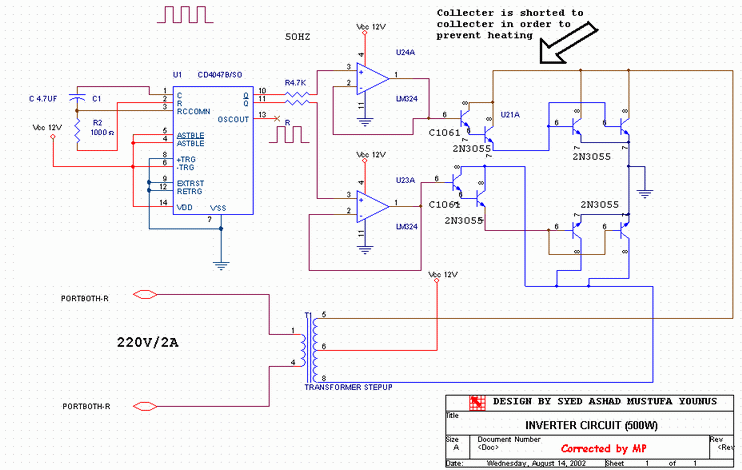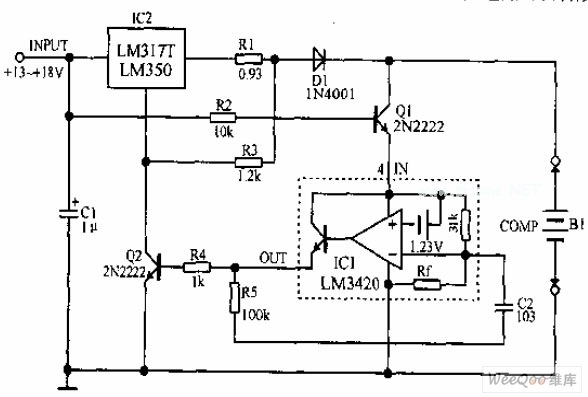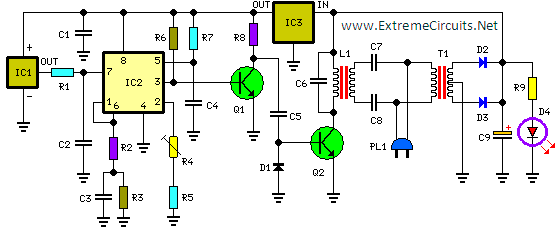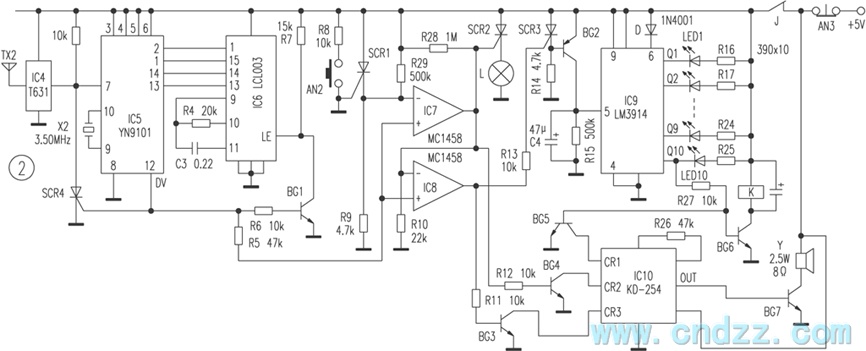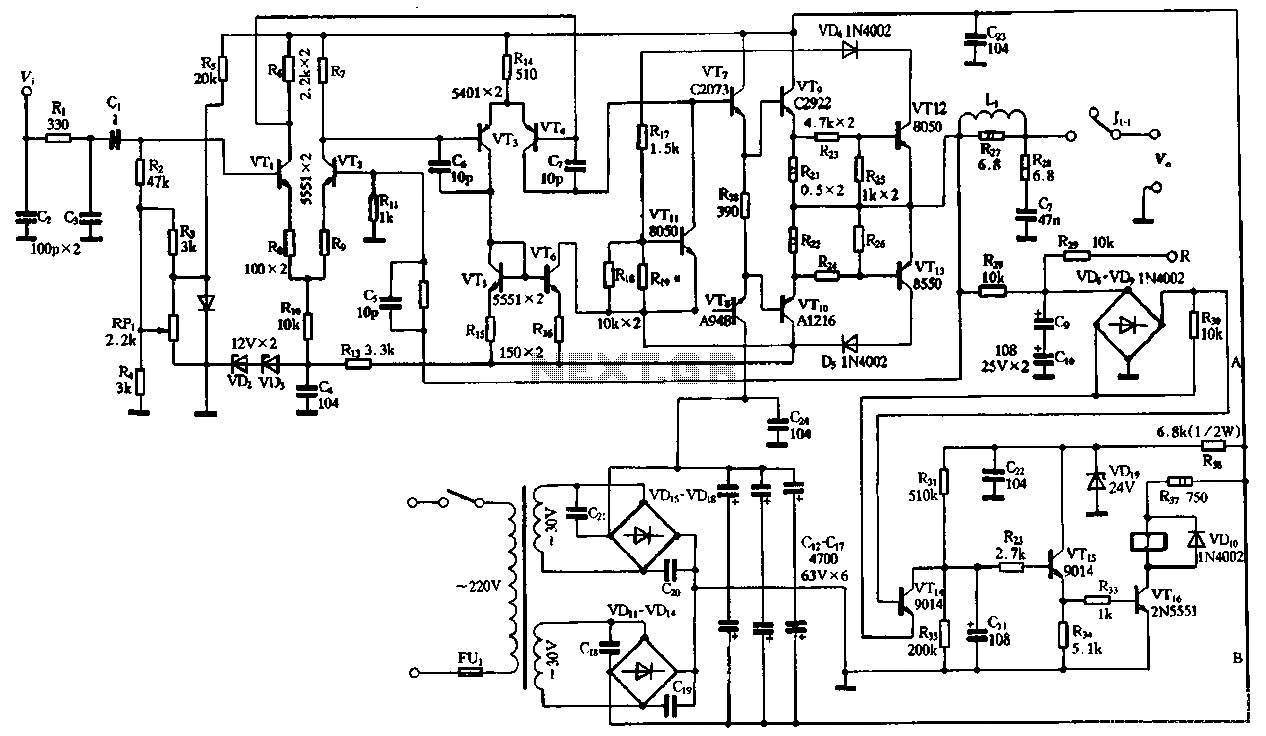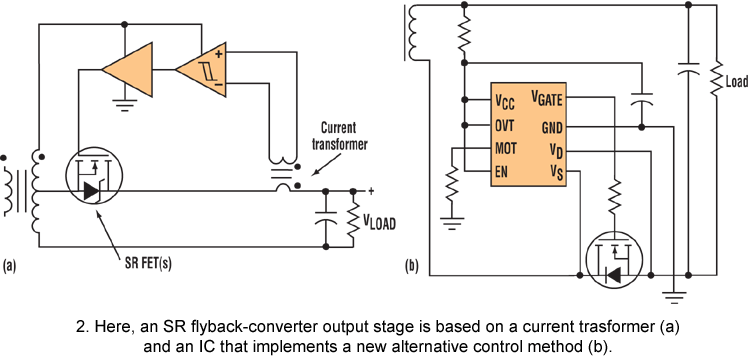
Adjustable 20V Supply Circuit
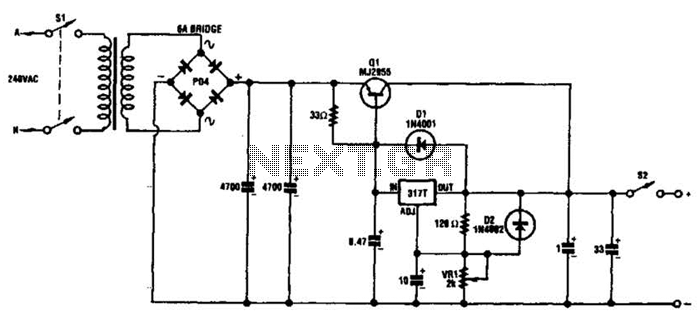
This circuit can deliver 3 A or more with a maximum DC voltage of slightly over 20 V. It is designed around the widely available LM317T adjustable 3-terminal regulator and incorporates a PNP power transistor to enhance the current output. The transformer has an 18-V secondary rated at 6 A, which feeds into a bridge rectifier and two 4700 µF capacitors to produce approximately 25 V DC. This voltage is supplied to the emitter of the MJ2955 transistor and to the input of the LM317 through a 33-ohm resistor.
The circuit utilizes an LM317T voltage regulator, which is capable of providing a stable output voltage adjustable from 1.25 V to about 37 V, depending on the resistor configuration. The LM317T is particularly beneficial in applications requiring a variable output voltage, and it has built-in current limiting and thermal overload protection, enhancing its reliability and safety.
In this design, the PNP power transistor, specifically the MJ2955, is employed to increase the output current capacity. The MJ2955 is a high-power transistor that can handle significant current loads, making it suitable for applications where the LM317T alone may not suffice. The transistor operates in conjunction with the LM317T, allowing for a combined output that can exceed 3 A.
The transformer with an 18-V secondary winding rated for 6 A ensures that there is sufficient voltage and current available for the circuit's needs. The bridge rectifier converts the AC voltage from the transformer to DC voltage, which is then smoothed by the two 4700 µF capacitors. These capacitors help to reduce voltage ripple, providing a more stable DC output for the regulator and the power transistor.
The inclusion of a 33-ohm resistor between the LM317T and the MJ2955 transistor's base allows for appropriate biasing of the transistor, ensuring it operates in the active region. This configuration helps to maintain the desired output voltage while allowing the transistor to handle the increased current demand.
Overall, this circuit design effectively combines the adjustable features of the LM317T with the high current capabilities of the MJ2955, making it a versatile solution for various electronic applications requiring a stable power supply. This circuit, can deliver 3 A or more and a maximum dc voltage ol` a little over 20 V. It is designed around the readily available LM317T adjustable 3-terminal regulator and has a pnp power transistor to boost the current output. The transformer has an 18-V secondary rated at, 6 A; this feeds to bridge rectifier and two 4700- capacitors to yield around 25 Vdc.
This voltage is fed to the emitter of the MJ2955 transistor and to the input of the LM317 via a 33-Ohm resistor. 🔗 External reference
The circuit utilizes an LM317T voltage regulator, which is capable of providing a stable output voltage adjustable from 1.25 V to about 37 V, depending on the resistor configuration. The LM317T is particularly beneficial in applications requiring a variable output voltage, and it has built-in current limiting and thermal overload protection, enhancing its reliability and safety.
In this design, the PNP power transistor, specifically the MJ2955, is employed to increase the output current capacity. The MJ2955 is a high-power transistor that can handle significant current loads, making it suitable for applications where the LM317T alone may not suffice. The transistor operates in conjunction with the LM317T, allowing for a combined output that can exceed 3 A.
The transformer with an 18-V secondary winding rated for 6 A ensures that there is sufficient voltage and current available for the circuit's needs. The bridge rectifier converts the AC voltage from the transformer to DC voltage, which is then smoothed by the two 4700 µF capacitors. These capacitors help to reduce voltage ripple, providing a more stable DC output for the regulator and the power transistor.
The inclusion of a 33-ohm resistor between the LM317T and the MJ2955 transistor's base allows for appropriate biasing of the transistor, ensuring it operates in the active region. This configuration helps to maintain the desired output voltage while allowing the transistor to handle the increased current demand.
Overall, this circuit design effectively combines the adjustable features of the LM317T with the high current capabilities of the MJ2955, making it a versatile solution for various electronic applications requiring a stable power supply. This circuit, can deliver 3 A or more and a maximum dc voltage ol` a little over 20 V. It is designed around the readily available LM317T adjustable 3-terminal regulator and has a pnp power transistor to boost the current output. The transformer has an 18-V secondary rated at, 6 A; this feeds to bridge rectifier and two 4700- capacitors to yield around 25 Vdc.
This voltage is fed to the emitter of the MJ2955 transistor and to the input of the LM317 via a 33-Ohm resistor. 🔗 External reference
Warning: include(partials/cookie-banner.php): Failed to open stream: Permission denied in /var/www/html/nextgr/view-circuit.php on line 713
Warning: include(): Failed opening 'partials/cookie-banner.php' for inclusion (include_path='.:/usr/share/php') in /var/www/html/nextgr/view-circuit.php on line 713
